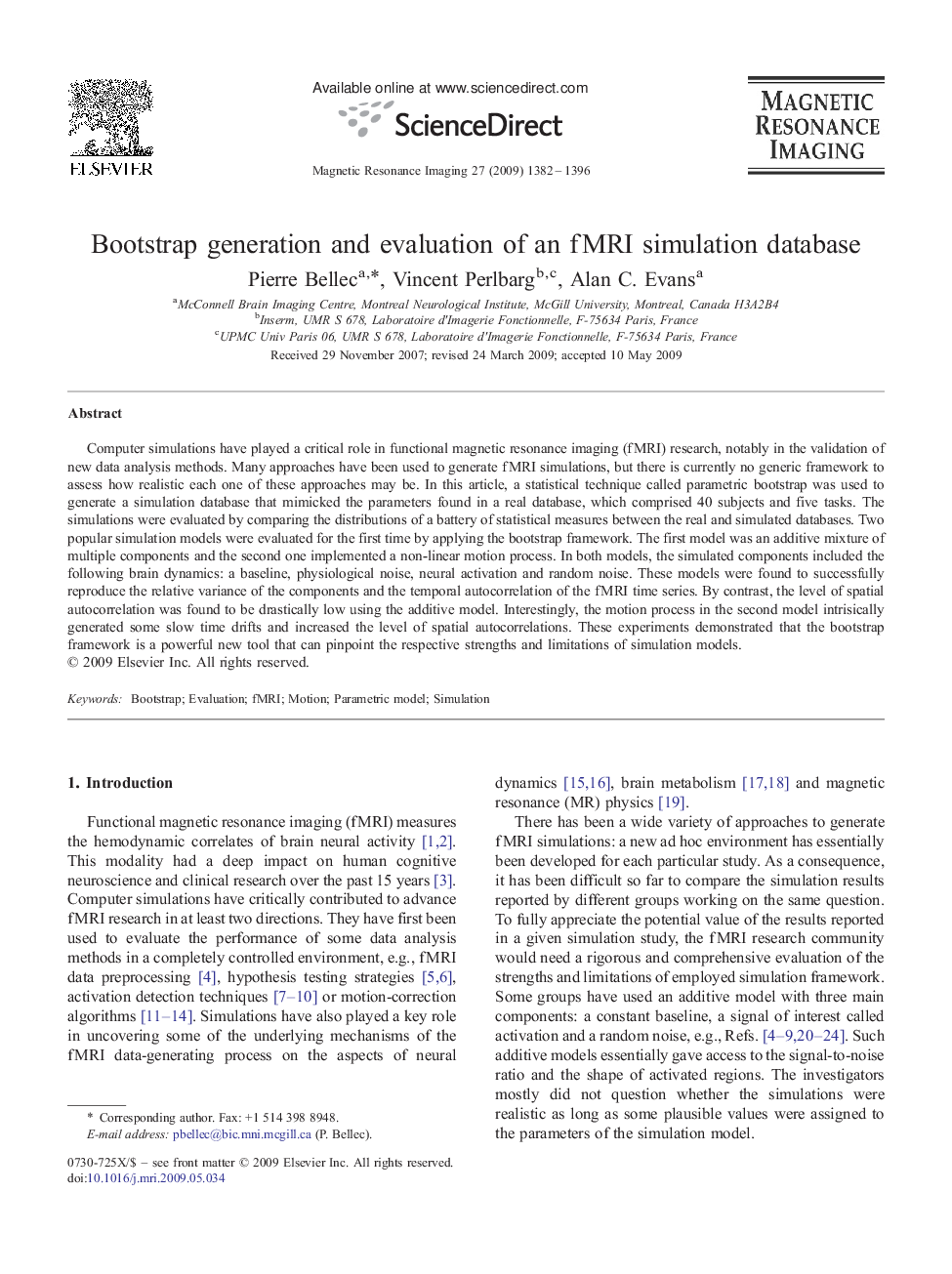| Article ID | Journal | Published Year | Pages | File Type |
|---|---|---|---|---|
| 1807178 | Magnetic Resonance Imaging | 2009 | 15 Pages |
Computer simulations have played a critical role in functional magnetic resonance imaging (fMRI) research, notably in the validation of new data analysis methods. Many approaches have been used to generate fMRI simulations, but there is currently no generic framework to assess how realistic each one of these approaches may be. In this article, a statistical technique called parametric bootstrap was used to generate a simulation database that mimicked the parameters found in a real database, which comprised 40 subjects and five tasks. The simulations were evaluated by comparing the distributions of a battery of statistical measures between the real and simulated databases. Two popular simulation models were evaluated for the first time by applying the bootstrap framework. The first model was an additive mixture of multiple components and the second one implemented a non-linear motion process. In both models, the simulated components included the following brain dynamics: a baseline, physiological noise, neural activation and random noise. These models were found to successfully reproduce the relative variance of the components and the temporal autocorrelation of the fMRI time series. By contrast, the level of spatial autocorrelation was found to be drastically low using the additive model. Interestingly, the motion process in the second model intrisically generated some slow time drifts and increased the level of spatial autocorrelations. These experiments demonstrated that the bootstrap framework is a powerful new tool that can pinpoint the respective strengths and limitations of simulation models.
